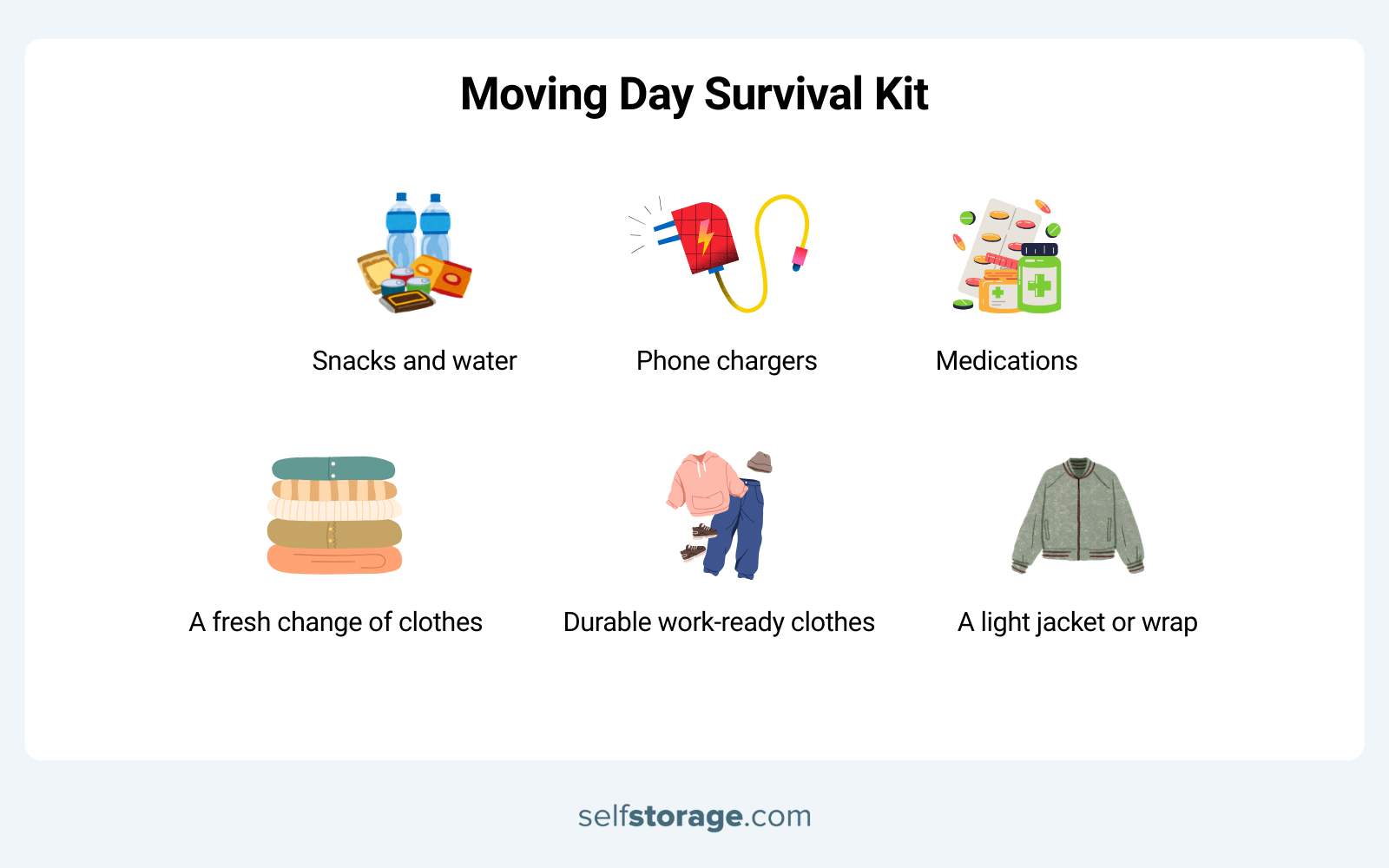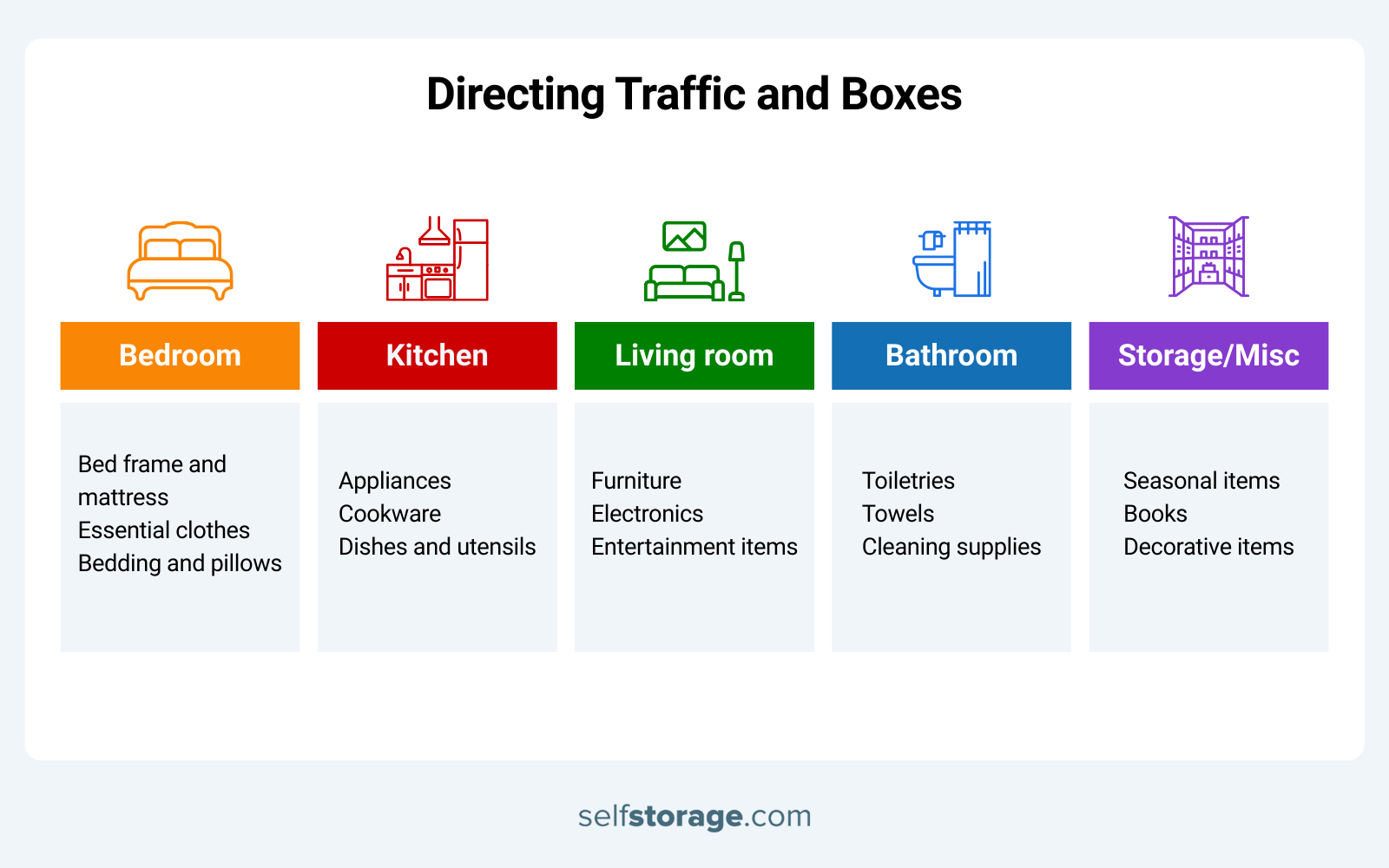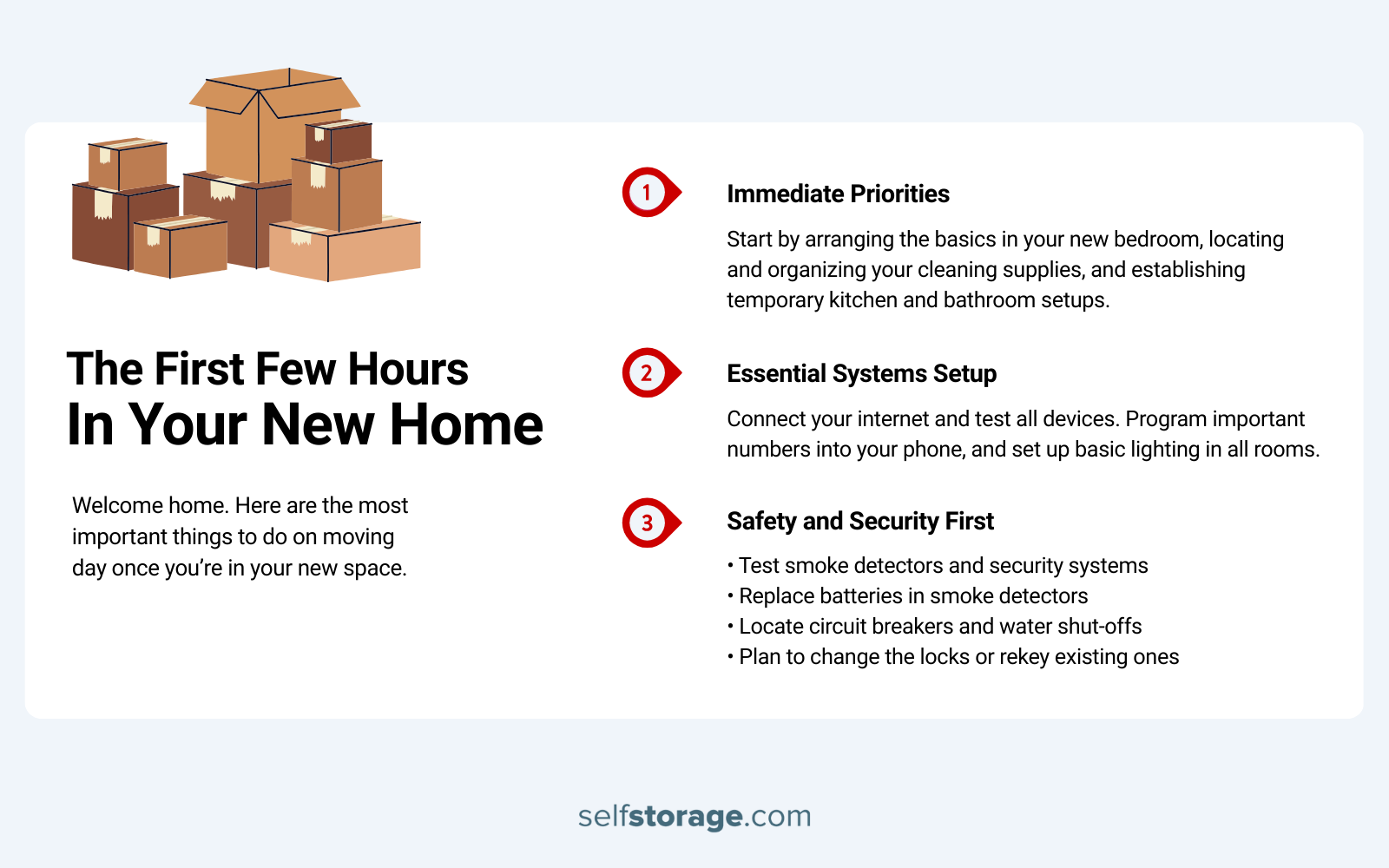Moving day has arrived! After weeks of planning with your comprehensive apartment move-in checklist, it’s time to execute your carefully crafted plan. This guide will walk you through the essential tasks, from your early morning preparations to settling in during your first few hours at your new home, providing valuable moving day advice to ensure everything goes smoothly.
You’ll want to be up bright and early on moving day to give yourself plenty of time to fuel up with a healthy breakfast, review your apartment move-in checklist for last-minute tasks, and complete any lingering to-dos before it’s time to pack in and head off to your new home.
Moving Day: Last-Minute Reviews, Walk-Throughs, and Other To-Dos
Early Morning Checklist

Start by confirming all parties are ready and available. Call your moving company to make sure they’re on schedule, and check in with friends who may be assisting with your move or accompanying you to make sure they’ll be ready to roll on time. Make sure all devices you’ll be using to communicate throughout the day are fully charged.
Next, prepare a moving day survival kit that includes:
- Snacks and water
- Phone chargers
- Any medications you may need throughout the day
- A fresh change of clothes if you’re making a long-distance move
- Durable work-ready clothes if you plan to help with bigger moving tasks
- A light jacket or wrap if you think you may get chilly
Final Walkthrough of Your Old Place
Before you leave, conduct a thorough final walkthrough of your current apartment. Check all closets, cabinets, and storage areas to ensure you haven’t left anything behind.
Take photos or videos of every room to document any damage or wear, including any issues that were there when you moved in, and photograph any move-out documents.
This documentation provides evidence that protects your security deposit should disputes about the condition of your old property arise later.
Finally, collect all personal items and house keys, mailbox keys, garage door openers, and other access devices, and place them in a marked envelope for your landlord.
Leave your new contact information with your landlord or property manager.
Prepare Your New Apartment
When you arrive at your new apartment, you may be excited to start moving boxes and furniture, but the first thing to do is to check in with your new landlord, get the keys, and conduct an immediate walkthrough.
Take photos of each room and document any existing damage. Test all appliances and utilities, including water pressure, heating and cooling systems, and electrical outlets, to make sure they are functioning as expected. Make sure you have the necessary parking and elevator access, if needed or expected.
Next, create designated staging areas for different categories of boxes and furniture. Use painter’s tape if necessary to mark off sections along the floor.
This organization system will help you organize and manage boxes and furniture as they are moved into your new home.
Set up a separate command center near the entrance for your essentials, such as snacks, contacts and documents, your apartment move-in checklists, keys, and access codes to your new building.
Moving Day Organization: How to Stay on Track
Move-in day can be chaotic, and effective traffic management during your move will help manage the madness and keep things running smoothly.
Following these essential moving day tips will make the process much more manageable.
Directing Traffic and Boxes

Assign specific rooms for the different categories of boxes using the color-coded labeling system you created when you packed them. Place colored paper corresponding to each category on the room doors and instruct the movers to place boxes and furniture accordingly.
| Room | Color Code | Priority Items |
|---|---|---|
| Bedroom | Blue | • Bed frame and mattress • Essential clothes • Bedding and pillows |
| Kitchen | Red | • Appliances • Cookware • Dishes and utensils |
| Living Room | Green | • Furniture • Electronics • Entertainment items |
| Bathroom | Yellow | • Toiletries • Towels • Cleaning supplies |
| Storage/Misc | Orange | • Seasonal items • Books • Decorative items |
Create and maintain clear pathways from the entrance to all rooms, and remove any obstacles that could slow down movers or create safety hazards.
Managing Moving Team Communication
Poor communication can ruin an otherwise well-planned move, so staying in close contact with your moving team is essential to keep stress levels to a minimum. This moving day advice is crucial for a successful transition.
- Designate one person as the main point of contact for your moving team, to prevent conflicting instructions and confusion
- Provide clear, specific instructions for handling fragile items, valuable possessions, and any pieces that require special handling
- Stay in contact with your moving team throughout the process, and check in regularly to remain informed of any issues, delays or adjustments needed to the plan
You may need access to important documents and items along the way, so be sure to keep your valuables and essentials with you, rather than loading them onto the moving truck. Knowing your most precious belongings and required documents are safe with you will give you peace of mind throughout your transition.
Handling Unexpected Challenges
Moving day is almost always unpredictable, so be prepared for the unexpected. Among the most common complications is uncooperative changes in the weather, so monitor forecasts closely and carefully wrap or tarp any delicate or moisture-sensitive items to protect them from possible rainstorms.
Another common issue movers face is furniture that doesn’t fit through doorways. Having a backup plan can help, so make yourself aware of:
- Alternative entryways
- Alternative placement locations for pieces that may not fit where you want them
- Keep a toolbox handy if you need to disassemble pieces to move them in sections
Delayed utilities or missing keys can derail your whole schedule, so keep backup emergency contacts on hand, and request alternative contact information for your new landlord or property manager.
Storage Unit Coordination
If you have rented a self-storage unit, decide in advance which items go straight into storage, and which items will be moved into your new place on day one.
Arrange boxes and bins in your unit with labels facing outward, and place the most important items you intend to retrieve first near the entryway for easy access.Leave a path between items in your unit so you can move around and access your items comfortably. Keep your storage unit organized to ensure you aren’t buried in stuff.
The First Few Hours in Your New Home

Welcome home. Everything is off the truck, the movers are gone and now you’re staring down a pile of personal belongings and furniture. Where to start? Here are the most important things to do on moving day once you’re in your new space.
Immediate Priorities
Start by setting up your bed, and arrange the basics in your new bedroom or interim sleeping area. A big move may leave you tired, and you’ll appreciate having a place to rest your head if you need a quick nap before tackling bigger jobs.
Next, locate and organize your cleaning supplies. If you followed our recommended apartment move-in checklist basics and tips for moving into a new apartment, these should be in your larger moving survival kit. Wipe down counters and toilets, and give sinks, showers, and tubs a quick scrub. If needed, sweep and mop the floors before bringing in large pieces and heavy furniture.
You’ll also want to establish temporary kitchen and bathroom setups.
Prepare your kitchen with the basics like a coffee maker, a few dishes, snacks, and enough supplies to prepare simple meals. If your new apartment has a pantry, you’ll also want to consider establishing a pantry organization system.
Place toilet paper, soap, and towels in the bathroom. You don’t need to do a deep unpacking at this point; just focus on the most important items you think you’ll need for the first few days as you work through unpacking and organizing.
Essential Systems Setup
Entertainment and communications access will save your sanity and your nerves as you settle in, so be sure to connect your internet and test all devices on your first day. Program important numbers into your phone, and set up basic lighting in all rooms. Keep in mind that some fixtures may need new lightbulbs, while other rooms may lack wired light fixtures and require lamps.
Safety and Security First
Safety matters, so before your first day in your new home ends, complete these critical things to do on moving day:
- Test smoke detectors and security systems to make sure everything is working correctly
- Replace batteries in smoke detectors
- Locate circuit breakers and water shut-offs
- Plan to change the locks or rekey existing ones
Making Room: Storage Solution Tips for Moving Into a New Apartment
Self-storage is a popular solution for more complicated moves and transitions. If you’re dealing with limited living space, overlapping dates, or more items than you’ve decided what to do with, storage offers both temporary and long-term solutions to support your move. These tips for moving into a new apartment can help you maximize your space and organize your belongings effectively.
Temporary Storage During Transitions
Sometimes you need to be out of your old unit before your new unit is available, and you need somewhere to store your things during the in-between. This is where temporary storage shines.
You can rent a unit on a flexible monthly basis and move in at your own pace instead of trying to get everything done in one day. Opt for a climate-controlled unit during your transition to protect any belongings that may be sensitive to temperature or humidity changes.
Staging Your Move with Storage
A self-storage unit is ideal if you prefer to stagger your move to prioritize getting the absolute essentials into your apartment first, before bringing in smaller or non-essential items. This is an appealing option for renters who prioritize meticulous home organization.
If you’re storing non-essential items while you arrange the critical pieces in your home, carefully label bins and boxes and organize your unit to ensure the most important items are easily accessible. Using storage for a staged move lets you gradually retrieve items as you set up your new home.
Long-term Storage Benefits for Renters
Self-storage is also an ideal go-to for seasonal storage, which is a common must-have for renters who need a place to store their sports gear and decorative or seasonal items long-term.
Holiday decor and sports equipment that may overwhelm an apartment can be safely housed long-term in self-storage during the off-season. This will keep your apartment clutter-free while protecting your valuable goods.
SelfStorage.com offers renters and homeowners alike a simple storage search tool that allows you to search, compare, and reserve the best storage units near you – so you have one less thing to check off your to-do list.
24-Hour Access Advantages
Many storage facilities offer 24/7 access, which works well for busy schedules or those who need after-hours access. Flexible hours allow you emergency access to your stored items, and freedom from business-hours-only access means there’s no need to rush from work or cut personal commitments short when you need to access your unit.
You Did It!
Congratulations on successfully executing your moving day! With the critical items in place and the immediate priorities handled, you’re ready to start the exciting process of truly settling into your new home. Following this comprehensive moving day advice will help ensure your transition goes as smoothly as possible.
When you’re ready to fully settle into your new home, check out our collection of helpful articles on how to organize your home so you can love the space you’re in for years to come.









